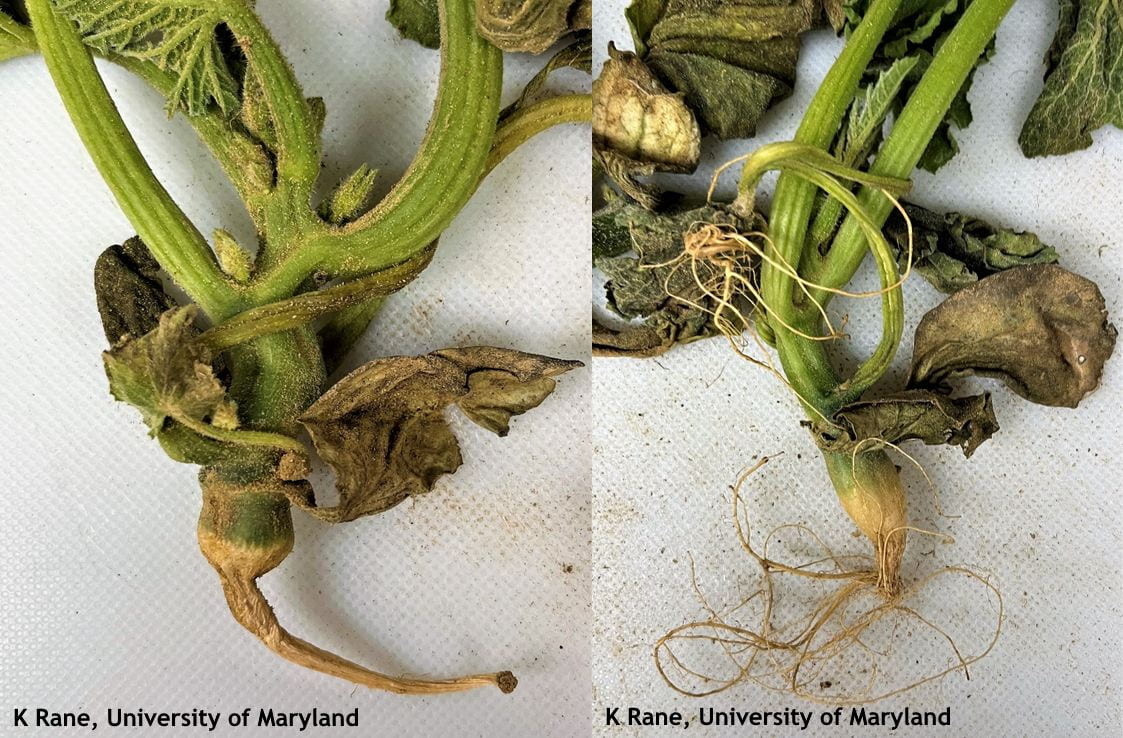Jerry Brust, IPM Vegetable Specialist, University of Maryland; jbrust@umd.edu
A county educator in Maryland sent in some pumpkin plants that he thought looked like pre-emergent herbicide damage and Karen Rane and I thought so too. Dinitroanilines alter root and shoot development and are used for pre-emergent control of grasses and broadleaf weeds. Most pre-emergent herbicides need sufficient water for activation such as a ½ inch or so of rainfall. However, too much rain (1.5 inches or more, which commonly can fall in a thunderstorm) can push the herbicide into the root zone of the crop to be grown and effect its growth. Varieties differ in their susceptibility resulting in both good-looking plants and damaged plants in the same row due to slightly different planting depths and soil types.
Symptoms of injury consist of a noticeable stem constriction between the roots and leaves (Fig. 1) with secondary roots often developing above the constriction. Plants are usually brittle and easily break at the swelling site. If there is a splitting of the primary root or shoot this could lead to poor growth, wilting, and death of the plant later in the season.
The pre-emergent herbicides should not be applied to wet soils or applied prior to an anticipated rain, which at times is not really possible. Another aspect to consider after a heavy rain is the lateral movement of the pre-emergent herbicide. Surface water runoff can move herbicide residues to unintended areas of the field.

Figure 1. Damage to crown and root of pumpkin plant (constriction) from preemergent herbicide most likely after heavy rains
